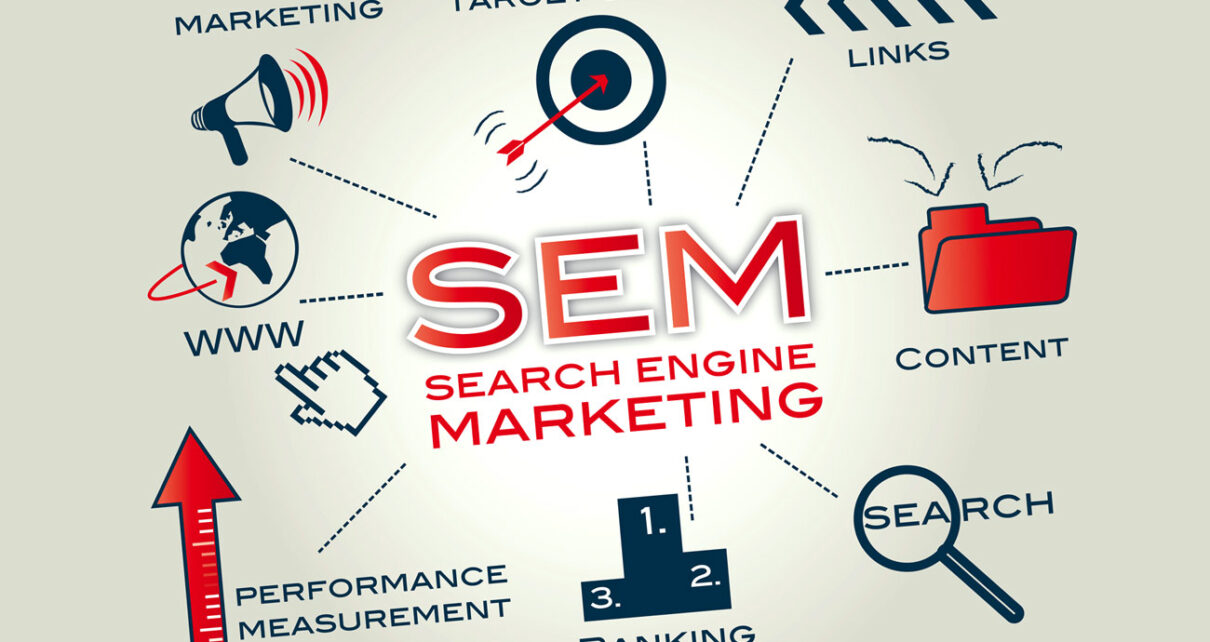Introduction Of Search Engine Marketing-
In the ever-evolving realm of digital marketing, Search Engine Marketing (SEM) stands out as a powerful and dynamic strategy that plays a pivotal role in enhancing online visibility and driving targeted traffic to websites.
SEM is a comprehensive approach that encompasses paid advertising and optimization techniques to ensure that businesses are prominently featured in search engine results pages (SERPs).
Significations of Search Engine Marketing-
- 1] Enhanced Visibility:
- SEM allows businesses to enhance their online visibility by placing ads prominently in search engine results. This increased visibility ensures that potential customers are more likely to discover the website when searching for relevant products or services.
- 2] Immediate Impact:
- Unlike organic search engine optimization (SEO), which takes time to yield results, SEM delivers immediate impact. Through paid advertising, businesses can quickly generate traffic and increase their online presence, making it an ideal strategy for time-sensitive promotions or product launches.
- 3] Targeted Advertising:
- Search Engine Marketing enables highly targeted advertising, allowing businesses to reach specific demographics, locations, and user segments. Advertisers can tailor their campaigns to appear when users search for particular keywords, ensuring that their ads are shown to a relevant and interested audience.
- 4] Measurable Results:
- One of the significant advantages of SEM is the ability to measure and track campaign performance comprehensively. Advertisers can analyze metrics such as clicks, impressions, conversions, and return on investment (ROI), providing valuable insights into the effectiveness of their campaigns.
- 5] Budget Control:
- SEM provides advertisers with control over their budgets. Through platforms like Google Ads, businesses can set daily or campaign budgets, ensuring that they have a clear understanding of their advertising expenses. This flexibility allows for efficient resource allocation and optimization.
Features of Search Engine Marketing-
- Keyword Research:
- Identification of Relevant Keywords: SEM starts with thorough keyword research to identify the most relevant and high-performing keywords for a particular business or industry.
- Competitor Analysis: Analyzing competitors’ keyword strategies helps in understanding the landscape and optimizing keyword selection.
- Ad Creation:
- Compelling Ad Copy: Creating engaging and persuasive ad copies that encourage users to click. Ad copy should be relevant to the targeted keywords and convey the unique selling propositions of the product or service.
- Ad Extensions: Utilizing ad extensions to provide additional information like site links, callouts, and structured snippets, enhancing the visibility and value of the ads.
- Bid Management:
- Optimizing Bids: Regularly adjusting bid amounts to ensure ads are competitive and achieve the desired ad placement in SERPs.
- Budget Management: Setting and managing daily or campaign budgets to control overall advertising costs.
- Ad Placement:
- Search Network vs. Display Network: Choosing between displaying ads on search engine results pages (Search Network) or on partner websites (Display Network) based on campaign goals.
- Ad Tracking and Analytics:
- Conversion Tracking: Implementing conversion tracking to measure the effectiveness of campaigns in terms of desired actions, such as purchases, form submissions, or other conversions.
Objectives of Search Engine Marketing-
- Increase Visibility and Reach:
- Elevate online visibility by placing ads prominently on search engine results, ensuring that your brand is seen by a larger audience.
- Reach potential customers actively searching for products or services related to your business, maximizing exposure.
- Drive Targeted Traffic:
- Attract highly relevant and qualified traffic to your website by targeting specific keywords and demographics.
- Ensure that the traffic generated through Search Engine Marketing aligns with the interests and needs of your target audience.
- Boost Brand Awareness:
- Create brand recognition by consistently appearing at the top of search results, establishing trust and credibility among users.
- Reinforce brand messaging through ad copy, fostering familiarity and recall among potential customers.
- Generate Quick Results:
- Obtain immediate results by launching SEM campaigns, making it an effective strategy for businesses seeking rapid visibility and traffic.
- Capitalize on the quick turnaround time of SEM to meet short-term marketing objectives and goals.
- Optimize ROI with Cost Control:
- Exercise control over advertising costs with pay-per-click (PPC) models, allowing businesses to allocate budgets efficiently.
- Monitor and adjust campaigns in real-time to maximize return on investment (ROI) and ensure cost-effectiveness.
Conclusion of Search Engine Marketing-
In conclusion, Search Engine Marketing (SEM) stands as a dynamic and indispensable tool in the digital marketing landscape. Its multifaceted approach, combining both paid advertising and search engine optimization (SEO), empowers businesses to enhance their online visibility and connect with a targeted audience effectively.
One of the primary strengths of SEM lies in its ability to deliver measurable results. Through tools like Google Ads, businesses can track the performance of their campaigns in real-time, allowing for continuous optimization and refinement. This data-driven approach not only maximizes the return on investment but also provides valuable insights into consumer behavior and preferences.




